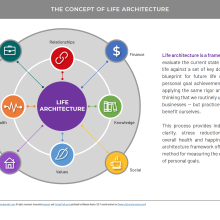As you know, the mission of StraightTalk is to break down business architecture bit-by-bit to help simplify, scale, and deliver value with the discipline globally, based on a shared foundation of knowledge. But our post here, No. 67, takes a little side-step on a related topic — one that matters to our lives — and with an exceptional guest.
We interviewed Gary Wright, a successful businessman and entrepreneur who has formed high tech companies and held positions with key technology innovators in the computer hardware and software, biotech, pharmaceuticals and medical device industries. He currently works as business architect for a large organization. Gary is a survivor of the Unabomber, a domestic terrorist who was the focus of the longest-running, most expensive criminal investigation in US history. Gary was nearly killed when he picked up a pipe bomb in the parking lot of his business and spent years recovering from his injuries. But it is through his experience that he has triumphed and emerged with a unique perspective on what it takes to recover from an act of terrorism, violence, or trauma – and he regularly shares his insights with business professionals and individuals like us. (Lucky us!)
Gary has appeared on numerous radio and television programs and has been hosted as a featured guest speaker at many conferences, companies, and institutions, including the US Senate, Good Morning America, Oprah, BBC, NPR, and many others.
As part of the ways he gives back, Gary focuses on the concept of life architecture – which is all about bringing structure and intention to our own lives and personal improvement. Yes, that means applying the same rigor and perspectives that we apply to our organizations to ourselves. This post is based on our interview with Gary, where he breaks down the what and why of life architecture for us.
Disclaimer: we’ve made some adjustments for our typical StraightTalk-style: the gray headings represent StraightTalk asking the questions and our guest, Gary, responds in turn.
Make sure to check out Gary’s incredible interview firsthand to hear the whole story (this post is an abbreviation), in our StraightTalk podcast, 20-Minutes With Gary Wright: The Concept of Life Architecture. This one is a must-listen.
Without further ado, here’s Gary.
What is life architecture?
Gary: In simple terms, the concept of life architecture is basically a framework that allows an individual to evaluate their strengths and weaknesses and assists in creating a blueprint or map on how best to move forward when life changes unexpectedly, when one desires the achievement of personal goals, or to respond when your life is impacted and will never be the same, as was the case for me.
Similar to business architecture, life architecture has core and extended domains, which I have named life blocks. Each life block has a category and there are different levels under each category. For example, health is a core life block with aspects such as physical, mental, emotional, philosophical and spiritual, and you can evaluate each one of those areas. Sometimes you will find they can be very severely impacted. For instance, in my situation, going through life and not knowing who the Unabomber was for nine years not only created physical damage to my body, but you can imagine the impacts to my emotional, spiritual and even philosophical health as well. Understanding how to move forward with that became really difficult because at the time counselors were not assigned to survivors of incidences like this, so you were kind of on your own. As I started to look at these pieces (life blocks), I had the realization that I somehow had to address and self-evaluate what needed to change. Like business, sometimes it is really difficult to evaluate what is going to happen or what has happened and try to apply what you know to make a change and make things successful moving forward. That, in a nutshell, is what life architecture is about.
Check out the diagram below for an overview of life architecture from Gary.
Why do you think the concept of life architecture is so important?
Gary: The world is a busy place and people struggle just to keep up with the demands of business – and you tie into that family life, health and nutrition, relationships and other demands. How do you balance all that effort and how do you know how to load yourself properly? Today it seems we are overloaded in one area or another, so I think some people have adjustments going on as technology changes our lives. There is a need for us to slow down a little bit and take a good inventory of what our lives look like.
Look at the things that work. If your core isn’t solid — your health, your knowledge, your value system, your finances — you can’t possibly succeed in the other extended areas like relationships, family, community and others. You have to start with the core. Just like in business, if the core isn’t solid, the extended domains will not be solid either. Like business architecture provides a set of building blocks for an organization to move from one place to another, the life blocks of life architecture can help an individual do the same.
People are very good at business and analyzing things, but they don’t do a good job of applying that same sort of analysis to their own personal lives. We need to do this to provide clarity on where we want to go, reduce stress and increase our overall mental health and happiness. Our society, in general, could use a bit of this as well. If we look at an old neighborhood concept: the better the people interaction, the better the neighborhood is.
Can you share a bit of your personal story and what led you to create the idea of life architecture?
Gary: I can share the Unabomber story and my struggles in trying to understand how to move forward after an act of terrorism. In 1987, I had started a company in the computer industry. The Unabomber was focused on anti-technology thoughts and so I was targeted for that reason. I picked up a bomb in the parking lot of my business and there was about 200 pieces of shrapnel that went through my body. I had lots of physical injuries, but it became pretty apparent that the physical side was going to heal. However, the other side, the mental side of the healing was pretty tough.
I went through a six-year period where I was in and out of surgery but at this time I also came to the conclusion that I might not ever know who this person was – and I did not find out who he was for nine years. I struggled with who this person was, and that was a drain on a daily basis – let alone thinking they may come back. The impact extended to my parents, family, friends, work and other aspects of my life. Having been in the spotlight for a while, I realized I had to find a way to balance some of this and accept that he may never be found and find a way to move on. This was a precursor to the ideas that life architecture was built around. My healing process was not linear and took a long time, but it gave me a chance to take a hard look at myself.
How do we put this idea of life architecture into action for ourselves?
People know when things are out of synch, so the first step is to really evaluate what is and is not working in your life and be really honest with the process. Write it down and use this as a baseline.
Then, look at your core and extended domains — not unlike what we’d do with an organization using the business architecture — and map the levels for each on yourself. You can even color-code your results. You will start to see some things that are interrelated and even see ways to short-cut how to make change in your life. When you see the interrelated components, then you can identify courses of action such as talking to someone, reading something, making certain changes on a daily basis or otherwise.
Having a visual map helps creates action for change. When you begin to apply your structured thinking and business expertise and apply it to your personal life, really cool things start to happen.
Anything else?
I asked myself this question a long time ago and it has shifted my thinking: “Do you deserve 10% or even 5% of your day?” Since then I have taken that 5% or 1.2 hours a day for myself, physically, mentally or whatever I need. Unless you plan this in and make it a priority, it never will be. I am still extremely productive and work a lot of hours, but that 1.2 hours a day keeps me grounded in what I need to do. Think what your personal life would look like if you put the same focus on it as you do with your e-mails and your business. You would have better relationships, more conversation and feel more grounded.
As we move into a new year — and decade — don’t let life just happen. Business architects are brilliant at creating blueprints for their organizations and fellow humankind to succeed in new ways. Make sure to take some time to do the same for your own precious self. The world needs you.
More Good Stuff…
20-Minutes With Gary Wright: The Concept of Life Architecture (StraightTalk podcast): Just in case you missed that link in the beginning of this post, make sure to check out Gary’s podcast, which was the basis for this post, where he breaks down the what and why of life architecture. It’s pure gold. Prepare to be inspired.
Gary Wright Life Architect: Here’s a link to Gary’s website where you can learn more about his story and how he can help.
Your Life In Weeks (Wait But Why): This is one of our absolute favorites. It provides a powerful perspective to help us reflect on our precious weeks and how we spend them.
What Trauma Taught Me About Happiness (TED Talk): A heartfelt TED Talk by Lindsey Roy on how to be here now and harness disruption and find clarity in the chaos. Her life lessons come from her challenging recovery process after experiencing a tragic boating accident that almost claimed her life and left her with significant injuries. This is powerful.

